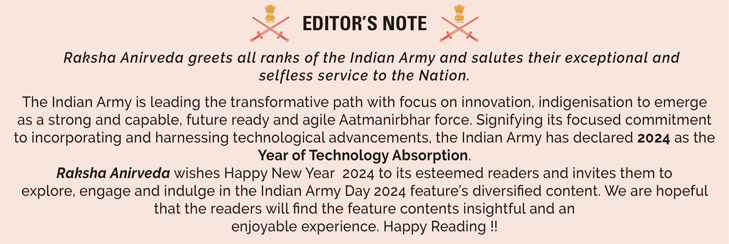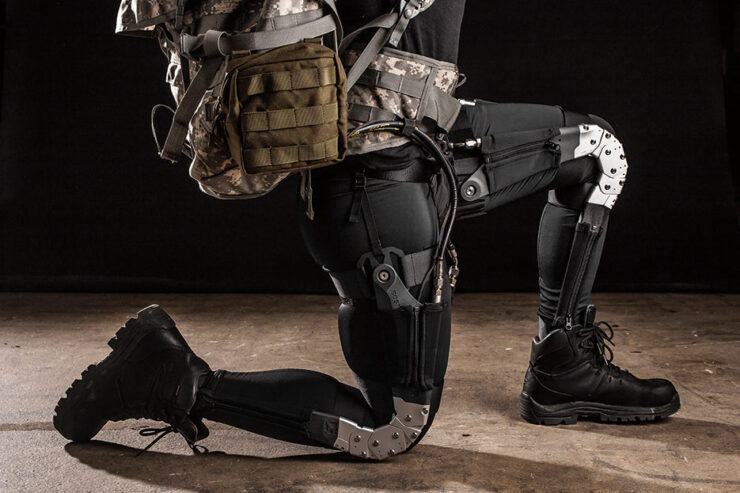The size of the Army matters but it is the technology that wins the war – Harry S. Truman
Warfare is increasingly becoming very complex, multidimensional, and highly dynamic. The ability to strike first, strike deep, and strike effectively is becoming essential for success in war. Future battles will predominately be dominated by technology. Technological superiority will be the decisive factor and key to success in the future battlefield.
The commanders on the modern battlefield need – the right information, at the right time to take immediate decisions. The Indian Defence Forces are expected to witness major modernization over the next decade. This would involve the purchase of new state-of-the-art equipment as well as an upgrade of hardware and systems to meet the security challenges of the future battlefield.
New Weapons Technologies and the Modern Battlefield
New and innovative technologies will change the manner in which wars are fought in the next two decades. This could revolutionize the battlefield in four broad areas—connectivity, lethality, autonomy, and sustainability.
Connectivity: the manner in which combatants detect and locate their adversaries, communicate with each other, and direct operations; Lethality: the damage that new weapons and weapon systems can inflict on battlefields; Autonomy: the ways in which robotics and AI can change who (or what) fights and makes decisions; Sustainability: the ways that militaries supply and support their deployed forces.
All over the world various countries are taking initiatives to modernize their Armies in keeping with the fast-changing technological environment of the modern battlefield. Some of the technological applications for the effective utilization of resources and enhanced combat efficiency may include the following:
Battlefield Surveillance – would play a major role in decision-making and is going to be one of the most important factors for winning future wars. It will lead to increased mobility, improved communications, and better decision-making with a much greater degree of fluidity on the future battlefield which will offer very little reaction time for our combat and fire support elements. GIS technologies will make it possible to process a large amount of information and deliver it to decision-makers in the desired format. Integration of GPS and GIS systems will provide the real-time location and status of various enemy assets and related infrastructure.
Surveillance Sensors and Platforms – a single sensor cannot detect or monitor all types of events on the modern battlefield. Hence there will be a need for various ground-based and airborne sensors to acquire information about the movement and deployment of the enemy’s combat forces on the battlefield. These battlefield surveillance systems would have to depend on satellites, airborne surveillance systems, heliborne surveillance systems, UAVs, battlefield surveillance radars, weapon locating radars, long-range electro-optical sensors, and sound-ranging systems. This intelligence inputs about the enemy activity obtained through human intelligence (HUMINT), imagery intelligence (IMINT), and sensors will help the decision-makers take timely and sound decisions.
Automation and Data Fusion – the use of multiple sensors in any future battlefield will generate a large volume of information that will be humanly impossible to process. This would therefore require a fully automated system that can process large amounts of data, identify the target, and brief the commanders about the situation on the battlefield in near real-time. This automated system will also help in the deployment/redeployment of sensors and assigning specific tasks for them.
Command and Control – an effective command and control system requires real-time, robust, reliable, and networked command, control, communications, computers, and intelligence for planning, preparation, and execution of operations and reduced decision-making time. Automated sensors and fool proof, reliable, fail-safe communications will prove to be a force multiplier.
Battlefield Transparency – Future technologies, smart decision support tools, and various sensors will enhance situational awareness and help combatants to continuously look deep and gain information about the adversary even beyond the physical battlefield.
Communication Systems – Real-time secure mobile communication links as well as integrated platforms to support voice, data, image, multi-media applications, and networking will be the backbone of modern warfare. Smart devices, mobile satellite terminals, and GPS infrastructure will provide a battle-winning advantage.
Smart Radios – application of digital technology will lead to intelligent radios as well as robust and high-capacity communication networks.
Information Dominance – the ability to intercept and decipher the adversary’s information systems, safeguard its own combat systems, and process real-time actionable intelligence in a time-bound manner shall provide the battle-winning edge to a Commander on the battlefield.
Electronic Warfare – the capabilities for jamming and counter-jamming to prevent disruption of one’s own systems will form an integral part of all future conflicts.
Nano-Technology – Advances in nanotechnology will lead to enhanced surveillance, protection, and connectivity as well as the development of lightweight, strong, and multifunctional combat systems and operational platforms.
Artificial Intelligence and Robotics – Artificial Intelligence and Robotics will have a big role to play in terms of the acquisition and processing of huge amounts of information received from different sources on the future battlefield. According to analysts, more than 80 percent of the world’s population will live in cities by 2050. This means that most armed conflicts will be much more complicated and will take place in urban areas. In such situations, various combat robots will need to be deployed in the planning and execution of military operations. This would lead to a different kind of arms race and the creation of more advanced hypersonic weapons that can penetrate the enemy’s missile defence systems. In due course, fully independent combat robots will replace human soldiers. Even at present at least 40 countries including the United States, Russia, the United Kingdom, France, China, Israel, and South Korea, are developing combat robots, unmanned aerial vehicles (UAVs), remotely piloted vehicles, and other robotic systems that can function without human participation in the air, surface, and underwater.
Miniaturisation – Gone are the days when big, bulky, and noisy tanks, artillery guns and fighter aircraft used to dominate the battlefield. Today these weapons and platforms are not only expensive but becoming a liability because of the evolution of effective counter-weapons. They would soon be replaced by smaller, smarter, relatively silent, and cheaper combat entities which will change the face of warfare in the future.
Unmanned Systems – After gunpowder and nuclear weapons, drones and automated killer robots have been described as the “third revolution in warfare”. We live in “the age of intelligent machines”, in which fully autonomous systems can make choices and identify targets while operating across multiple operational domains in the air, on and under the sea, and on land. The future unmanned and manned combat platforms will steadily be smaller, more compact, and more intelligent. They will be capable of working in groups and promote the need to come up with new models of deterrence.
Future Combat Systems – The future combat systems will include battle tanks and infantry combat vehicles with enhanced protection from tanks, guided missiles, attack helicopters, and mines.
Conclusion
Developments in imaging, remote sensing, night vision, sensors, precision-guided munitions, stealth technology, and digital communications have thrown up the need to adopt new warfighting techniques.
But what we need to understand is that technology by itself cannot replace the human soldier. High-tech devices can change the face of modern warfare but cannot replace good leadership, as well as motivated and trained soldiers who still are the most important factors for victory in war.
-The writer is a seasoned media professional with over three decades of experience in print, electronic, and web media. He is presently Editor of Taazakhabar News












